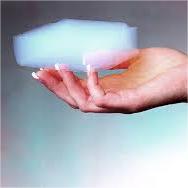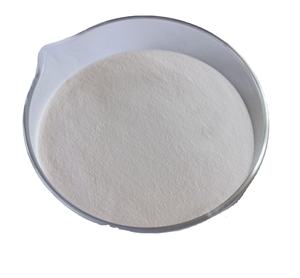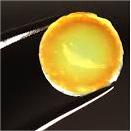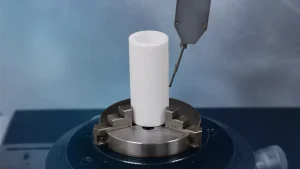Professional industry ceramic supplier, silicon nitride, silicon carbide, aluminum nitride and any other kinds of ceramics.
1. Introduction
In the past 48 hours, global demand for high-performance refractory materials has surged due to expanded investments in semiconductor manufacturing and renewable energy sectors—industries that rely heavily on silicon carbide (SiC) components. Among these, the silicon carbide crucible stands out as a critical enabler of high-temperature processes, from metal casting to laboratory synthesis.

Silicon carbide crucibles are prized for their exceptional thermal conductivity, chemical inertness, and resistance to thermal shock. Unlike traditional alumina (Al2O3) or zirconia (ZrO2) crucibles, silicon carbide offers superior durability in aggressive environments, making it indispensable in metallurgy, glass production, and advanced ceramics research.
2. Properties and Advantages of Silicon Carbide Crucibles
Silicon carbide is an advanced ceramic material composed of silicon and carbon atoms arranged in a crystal lattice. This structure grants it remarkable hardness—second only to diamond—and outstanding performance at temperatures exceeding 1,600°C.
Key benefits of the silicon carbide crucible include:
- High thermal shock resistance, allowing rapid heating and cooling without cracking
- Excellent corrosion resistance against molten metals and slags
- Low thermal expansion and high thermal conductivity for uniform heat distribution
- Long service life compared to conventional ceramic crucibles
These attributes make silicon carbide crucibles ideal for melting non-ferrous metals like aluminum, copper, and zinc, as well as for use in analytical laboratories requiring contamination-free sample preparation.
3. Comparison with Other Advanced Ceramics

When evaluating refractory options, engineers often compare silicon carbide with alternatives such as boron carbide and silicon nitride. The boron carbide vs silicon carbide debate centers on application-specific needs: boron carbide excels in neutron absorption and armor applications but is more brittle and costly, whereas silicon carbide offers better thermal stability and machinability for crucibles and furnace components.
Silicon nitride (Si3N4), another high-performance ceramic, is commonly used in bearings, cutting tools, and custom silicon nitride heat shields. While silicon nitride crucible factories produce lab-grade containers with excellent oxidation resistance, silicon carbide remains preferred for direct contact with molten materials due to its higher thermal conductivity.
Other ceramics like alumina (aluminiumoxid keramik) and zirconia crucibles are widely used but lack the thermal robustness of silicon carbide in extreme cycling conditions.
4. Diverse Applications Beyond Crucibles
The versatility of silicon carbide extends far beyond crucibles. Industrial and consumer products increasingly leverage this material’s durability and aesthetic appeal.
In household goods, items such as silicon carbide ceramic baking dishes, silicon carbide ceramic dinner plates, and silicon carbide ceramic serving bowls are gaining popularity for oven-to-table use. Brands offering silicon carbide baking dish Staub-style cookware highlight its even heating and chip resistance.

Architecturally, silicon carbide ceramic tiles and rbsic silicon carbide tile blocks serve in high-wear flooring and cladding. Meanwhile, functional components like silicon carbide burner nozzles, silicon carbide bricks, and silicon carbide ceramic columns support industrial furnaces and kilns.
Precision parts—including silicon carbide rings, silicon carbide discs, and silicon carbide ceramic tubes—are used in pumps, valves, and thermocouple protection systems. Notably, silicon carbide porous ceramic tubes and silicon carbide thermocouple protection tubes enable reliable sensing in corrosive, high-temperature zones.
5. Safety, Manufacturing, and Market Trends
Concerns about ceramic cookware dangers are often misplaced when applied to silicon carbide. Unlike some glazed ceramics that may leach lead or cadmium, high-purity silicon carbide is chemically stable and non-toxic, making silicon carbide ceramic dinnerware safe for daily use.
Manufacturing involves sintering fine silicon carbide powder under controlled atmospheres, sometimes with additives like silicon nitride to enhance density. Recent innovations include reaction-bonded silicon carbide (RBSiC) for complex shapes like silicon carbide ceramic casserole dishes with lids or handcrafted plates.
Globally, the high purity silicon nitride powder market and silicon carbide sectors are expanding in tandem, driven by electric vehicle and aerospace demands. Customized solutions—from silicon carbide ceramic pasta bowls to silicon carbide blue white porcelain plates—reflect growing consumer interest in durable, high-end tableware.
6. Conclusion
The silicon carbide crucible exemplifies the convergence of industrial utility and material science excellence. Its unmatched performance in extreme environments, coupled with expanding applications in both heavy industry and everyday ceramics, underscores silicon carbide’s pivotal role in the advanced ceramics ecosystem. As technology advances, expect further innovation in forms ranging from silicon carbide ceramic grinding discs to custom-engineered furnace components.
Our Website founded on October 17, 2012, is a high-tech enterprise committed to the research and development, production, processing, sales and technical services of ceramic relative materials such as What. Our products includes but not limited to Boron Carbide Ceramic Products, Boron Nitride Ceramic Products, Silicon Carbide Ceramic Products, Silicon Nitride Ceramic Products, Zirconium Dioxide Ceramic Products, etc. If you are interested, please feel free to contact us.




